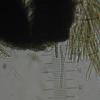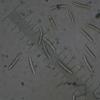
17-12-2025 18:35
 Michel Hairaud
Michel Hairaud
Bonjour à tous/Hi to everyone I am passing along

15-12-2025 15:48
 Danny Newman
Danny Newman
Melanospora cf. lagenaria on old, rotting, fallen

15-12-2025 15:54
 Johan Boonefaes
Johan Boonefaes
Unknown anamorph found on the ground in coastal sa

15-12-2025 21:11
 Hardware Tony
Hardware Tony
Small clavate hairs, negative croziers and IKI bb

15-12-2025 07:09
 Danny Newman
Danny Newman
indet. Rutstroemiaceae sp. on unk. fallen leavesMc

15-12-2025 07:05
 Danny Newman
Danny Newman
Pseudosclerococcum golindoi (det: Zotto)near Cosb

15-12-2025 11:49
 Danny Newman
Danny Newman
ITS sequences from the following two collections B

15-12-2025 12:34
 Danny Newman
Danny Newman
indet. Rhytismataceae on oak leafnear Purchase Roa
Black on Picea abies
Marja Pennanen,
06-08-2011 12:09
these black spots are up to something like 0,5x0,1 mm.
The asci are 50-65x3-4.
Spores are 12-16x2 and seems to develop one septum.
Maybe this represents a Mytilinidiaceae species. Could this be for instance Actidium hysterioides or A. nitidum?
Marja
Alain GARDIENNET,
06-08-2011 17:37
Re : Black on Picea abies
Yes very probably A. nitidum.
Alain
Alain
Marja Pennanen,
07-08-2011 12:19
Re : Black on Picea abies
Thank you!
Once again a representative of a new genus for me.
The species may even be new to Finland.
Marja
Once again a representative of a new genus for me.
The species may even be new to Finland.
Marja
Alain GARDIENNET,
15-11-2022 18:25
Re : Black on Picea abies
Hi Marja,
10 years later, I read again your post, and my answer. No I can say that is not Actidium nitidum, but un ined. species. Did you keep material ?
I find a similar species several time, but on Abies. Did you sure of Picea ?Best wishes,
Alain
10 years later, I read again your post, and my answer. No I can say that is not Actidium nitidum, but un ined. species. Did you keep material ?
I find a similar species several time, but on Abies. Did you sure of Picea ?Best wishes,
Alain
Marja Pennanen,
19-11-2022 12:46
Re : Black on Picea abies
Dear Alain,
I have the specimen and I just checked it. It seems to be a small branch of Picea abies, where those black ones grow.
Greetings: Marja



